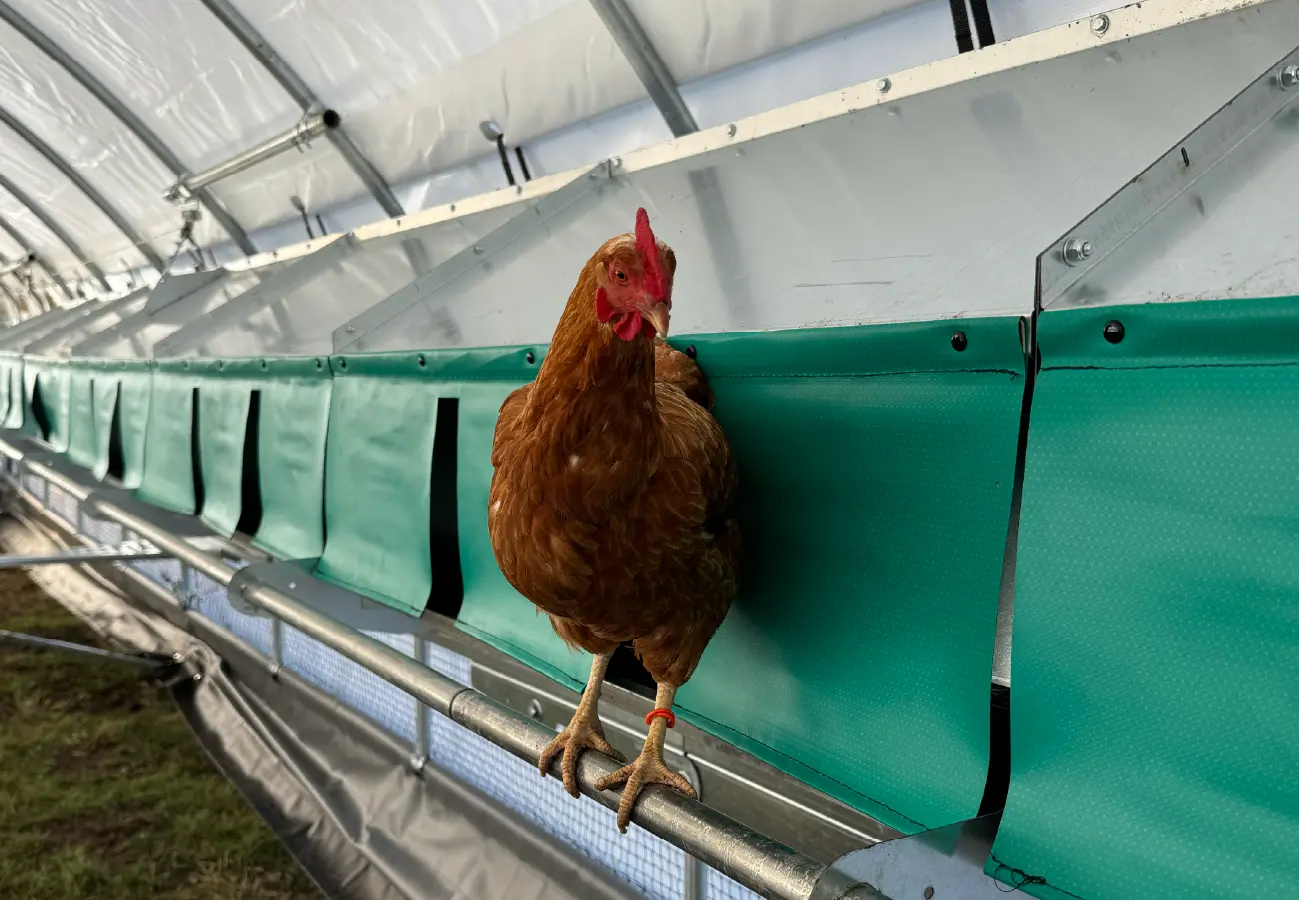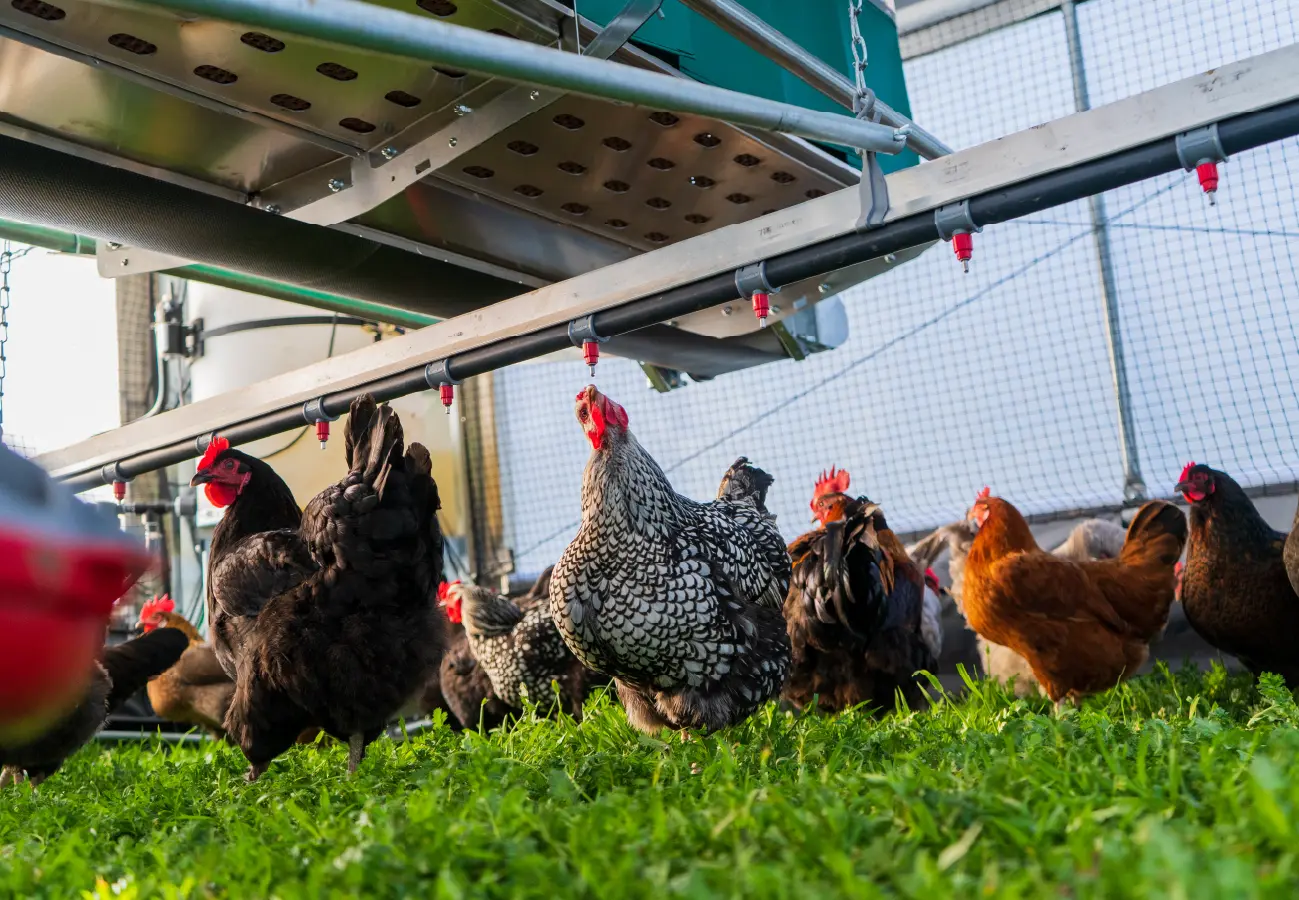
Chickens and Heat
Chickens don’t sweat. Instead, they rely on panting and the circulation in their combs and wattles to cool themselves down. That means when temperatures rise, they become more vulnerable to overheating, especially if they don’t have proper shade, airflow, or access to cool water.
The Temperature Danger Zones
- 29–30°C (85°F): Heat stress begins. Chickens might start to pant or eat less.
- 35°C (95°F) and up: You’re now in the high-risk heat zone. Monitor your flock closely.
- High humidity makes it worse. Just like for humans, humid conditions make it harder for birds to cool off.
Temperature and humidity work together to create a heat index, which can be much more dangerous than temperature alone. For example, 35°C (95°F) with 60% humidity feels significantly hotter to your birds than the same temperature with dry air. Always factor in the humidity when assessing risk.
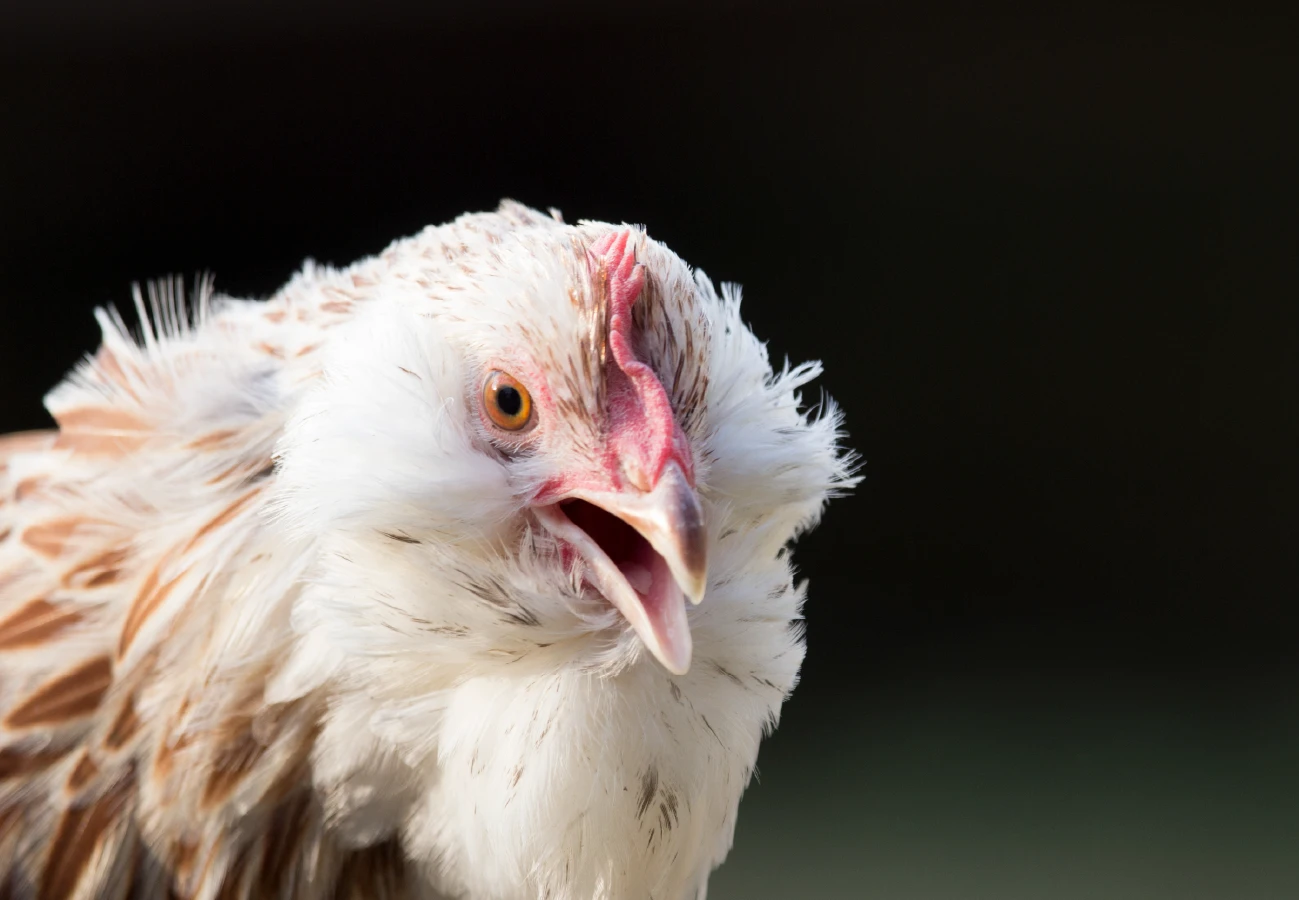
Signs of Heat Stress in Chickens
If you notice any of these signs in your birds, it’s time to intervene:
- Panting or open-mouth breathing
- Holding wings away from the body
- Lying down in shady areas
- Reduced feed intake
- Pale or shrunken combs and wattles
- Diarrhea (in more severe cases)
These are a chicken's way of saying “I’m struggling”. Be sure to watch for less obvious signs too, like your birds standing still with their eyes closed, not interacting with the flock, or seeking wet or muddy patches to stand in.

How to Keep Your Chickens Cool in Hot Weather
Whether you’re using a stationary coop, a DIY chicken tractor, or a smart barn like the ROVA|BARN, the key to heat management is in proactive planning. Here are the top strategies we recommend:
1. Prioritize Shade
Make sure your flock has access to shady areas throughout the day. If you're raising chickens in a mobile coop:
- Use white or reflective roofing instead of black tarp or metal, which can trap heat. (We learned this firsthand—our earliest ROVA prototypes had tin roofs and it made a huge difference when we switched.)
- Park your mobile barn in a breezy spot and orient it to take advantage of natural airflow.
2. Keep Water Cool and Fresh
Water is the most important tool in your heat management kit. Keep an eye on water levels and refill your tanks frequently to avoid the water heating up and going stale.
- If your water system is outside, use a cover to block direct sun.
- Change the water every couple of days so it doesn't sit and heat up.
- With the ROVA|BARN, the water tank is stored outside, but the water lines are shaded and protected inside the barn. You can monitor levels from your phone, which makes things a lot easier.
- We’ve also developed the ROVA|BULK Water Trailer, a solar-powered, pressurized water trailer that makes it easy to bring cool, fresh water directly to your birds, even in remote fields. With 100 feet of hose, automatic pump modes, and remote monitoring, it’s one of our favourite summer tools for farmers who want full control of their water supply.
For added support during extreme heat, you can also consider adding electrolytes to your flock’s water to help your birds absorb water more efficiently and stay hydrated. Just mix the recommended quantity listed on the label when you’re filling your tank.
3. Support Natural Thermoregulation
Chickens will instinctively look for ways to cool off, but only if their environment gives them the tools to do it.
One of the most important self-regulating behaviours is dust bathing. When chickens roll in dry soil or loose bedding, they help cool their bodies by coating their skin with dust, which helps wick away heat and deters parasites. It also helps them feel safe and calm. To encourage dust bathing, make sure your birds have access to a shaded, dry patch of soil, sand, or wood ash where they can bathe freely.
Another helpful setup is elevation as structures that lift the body of the coop off the ground allow hot air to rise and escape more efficiently and keeps the space near the birds cooler. In the ROVA|BARN, for example, the 9-to-11-foot ceiling and open flaps create a chimney effect, letting warm air move upward while drawing in cooler air from the sides. This natural airflow mimics what chickens would seek in nature, a breezy, open space to escape the stagnant heat near the ground.
4. Extra Cooling Tools
If shade and airflow aren’t enough, you can add cooling features like fans to help move air through the structure (just be mindful of power requirements in off-grid setups).
Misting systems are also very effective and are usually installed higher up in the barn (above the chickens and curtain height) to release fine droplets that evaporate in the air and help absorb heat in the process. Combined with natural airflow or fans, this creates a cooling effect throughout the space, helping lower the air temperature inside the barn without soaking the birds.
Our ROVA|BARNs have optional misting add-ons, and the high ceiling (9-11 ft) allows hot air to rise, while side flaps open to let cool breezes in for better airflow without extra labour.
You can also mist the ground or areas around the barn (not directly on the birds) to create small evaporative cooling zones during extreme heat.
5. Avoid Overcrowding
More birds = more body heat. During hot spells, make sure your flock has plenty of space to spread out to help reduce stress and give them room to find the coolest spots inside the barn.
Some breeds are also better suited to hot, outdoor conditions than others. Heritage breeds like Freedom Rangers tend to handle heat more easily, while commercial breeds like Cornish Cross can struggle in high temperatures. If you’re raising multiple types, keep a closer eye on the more heat-sensitive birds.
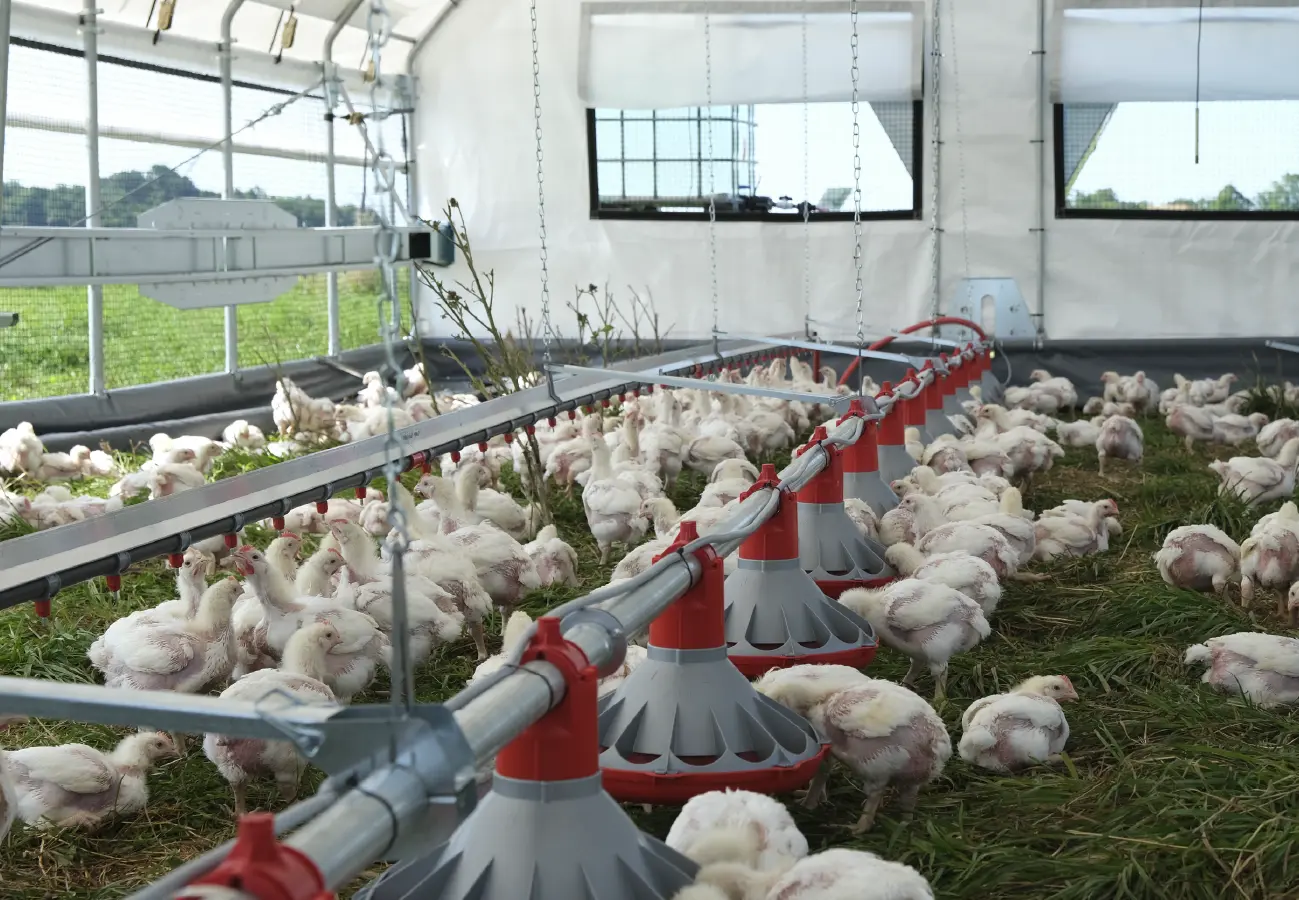
What Makes the ROVA|BARN Heat-Smart?
We started UKKÖ Robotics to make pasture-based farming easier and more accessible for farmers. The ROVA|BARN was built to handle the real-world challenges of raising chickens outdoors, and hot weather is one of the biggest challenges of all, and one that we experience firsthand every summer on our Manitoba farm.
Here’s how the ROVA|BARN mobile coop helps chickens stay cool:
- High Ceilings (9–11 ft): Hot air rises away from your birds
- Reflective Roofing: White tarp reflects sunlight and keeps interiors cooler
- Flap Ventilation: Flaps open and close based on temperature sensors
- Optional Misting System: Helps on extra-hot days (especially in southern climates)
- Mobile Design: Easily reposition the barn to shadier, breezier spots
- Smart Monitoring: Control airflow and track temperatures from your mobile app
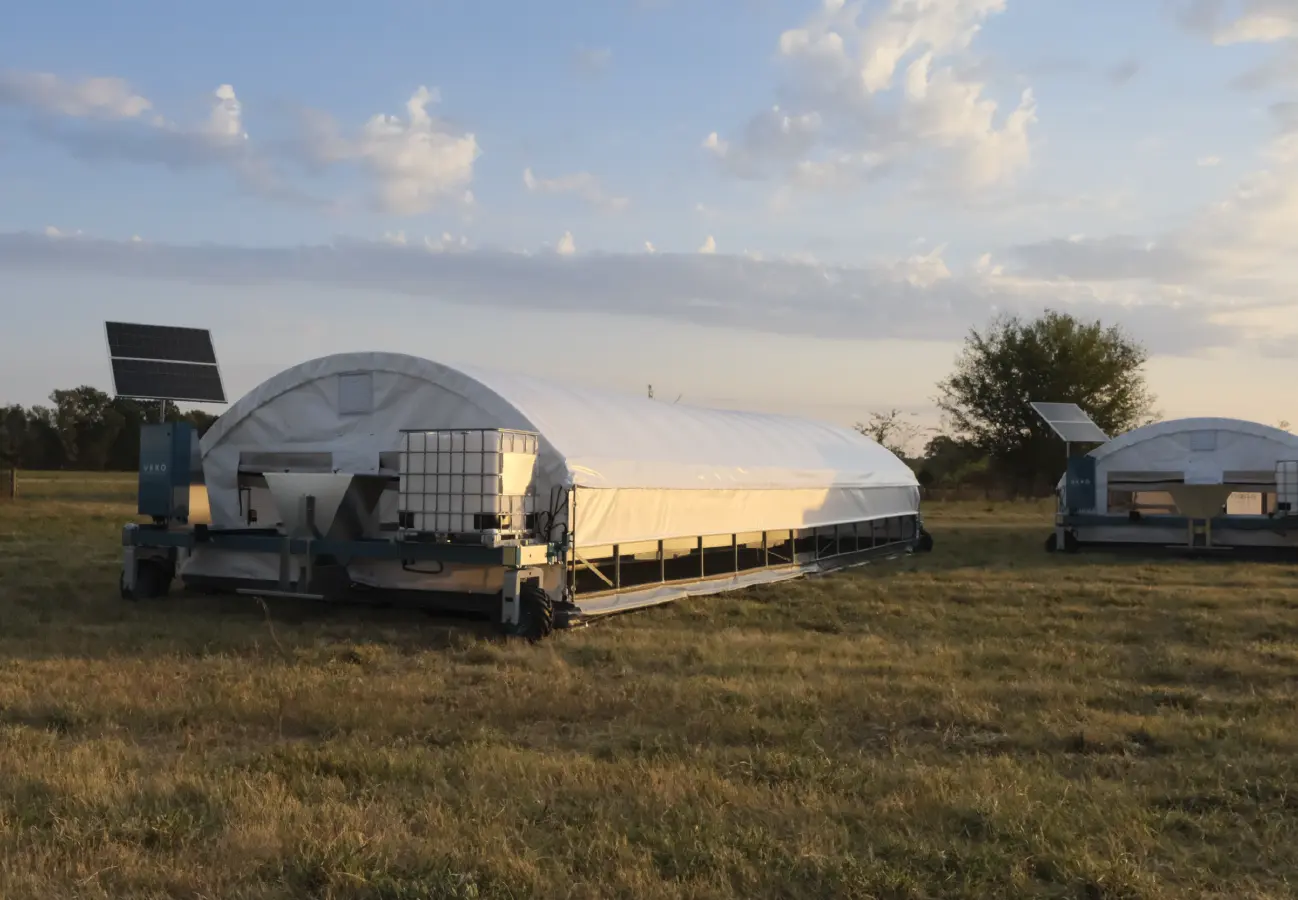
Regional Considerations
If you farm in a hot climate, like the southern U.S. or Australia, you already know that summer heat is no joke. We recommend considering these regional strategies:
- Install a misting system to use on days over 35°C (95°F)
- Choose heat-tolerant chicken breeds when possible
- Increase your barn’s shade coverage with external tarps, shade sails, or low shrubs
- Make sure barns are rotated more frequently to prevent heat buildup in one area
- Don’t move chickens at midday when the sun is at its hottest; instead, always try to move them in the mornings and evenings when it's cooler.
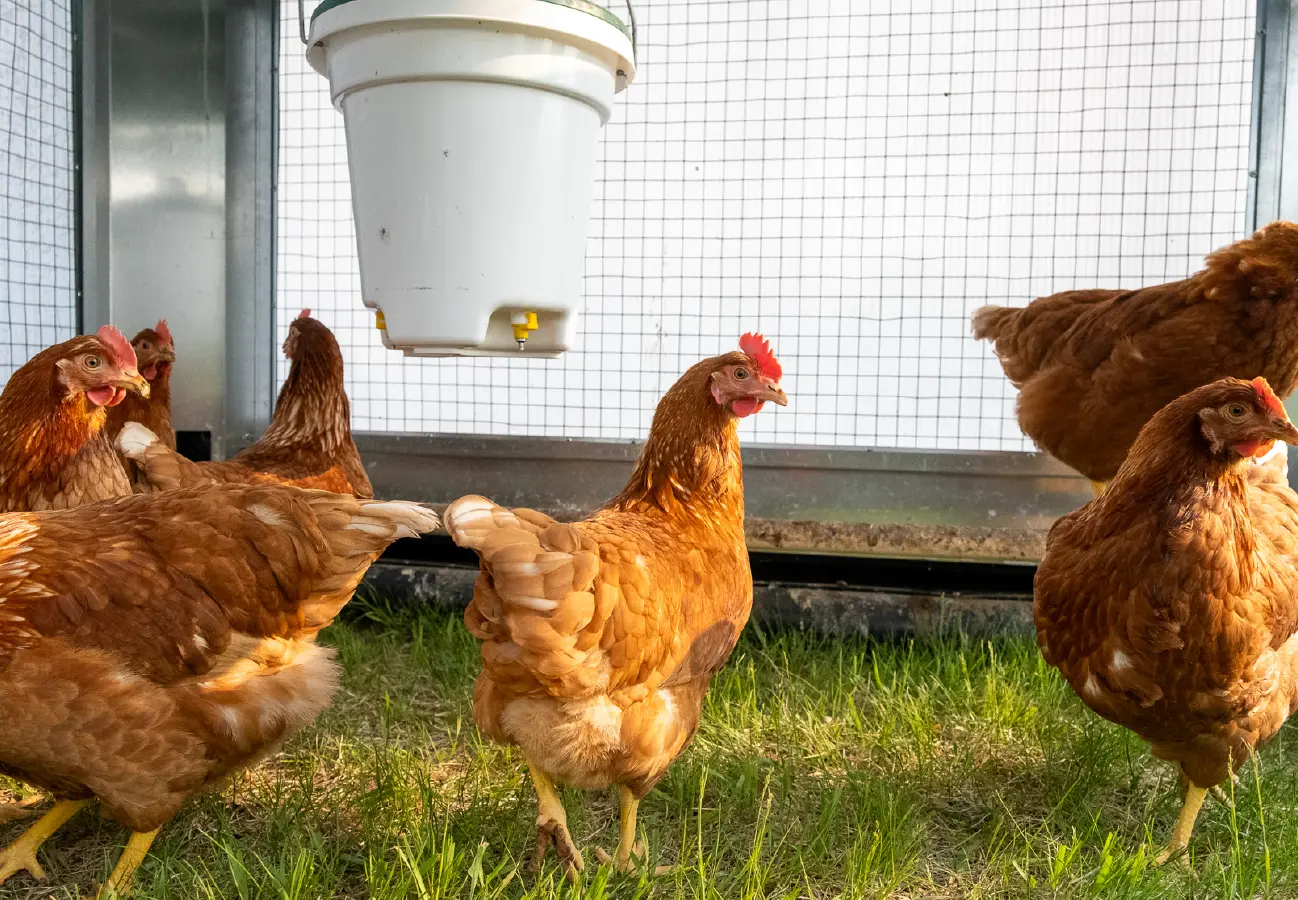
What Happens If Chickens Overheat?
Heat stress can quickly escalate to heat exhaustion or even death if it’s not addressed. It can also cause long-term health issues, impact egg production, and reduce growth rates in broilers.
Even if your chickens survive a heat wave, their immune systems and productivity can take a hit, so it’s better to prevent the problem initially than to treat it later.
If a chicken collapses or appears unresponsive from the heat, act fast:
- Move the bird to a shaded, cool location immediately
- Submerge only the body (not the head) in cool but not icy water for 1–3 minutes
- Offer cool drinking water and monitor your bird closely
- Keep the bird isolated until it is fully recovered
- And when in doubt, always check with your local vet for additional guidance
Key Takeaways for Summer Chicken Care
- Chickens start experiencing heat stress at 29°C (85°F).
- Above 35°C (95°F), you need to take active steps to cool your flock.
- Look for panting, pale combs, open wings, and reduced feed intake.
- Prioritize shade, cool water, airflow, dust baths, and spacing.
- Use ventilation, fans, and misting for extreme conditions.
- Factor in humidity and breed tolerance.
- Act quickly if birds show signs of collapse.
- The ROVA|BARN is designed to keep your birds cool, comfortable, and safe, even on the hottest days.


